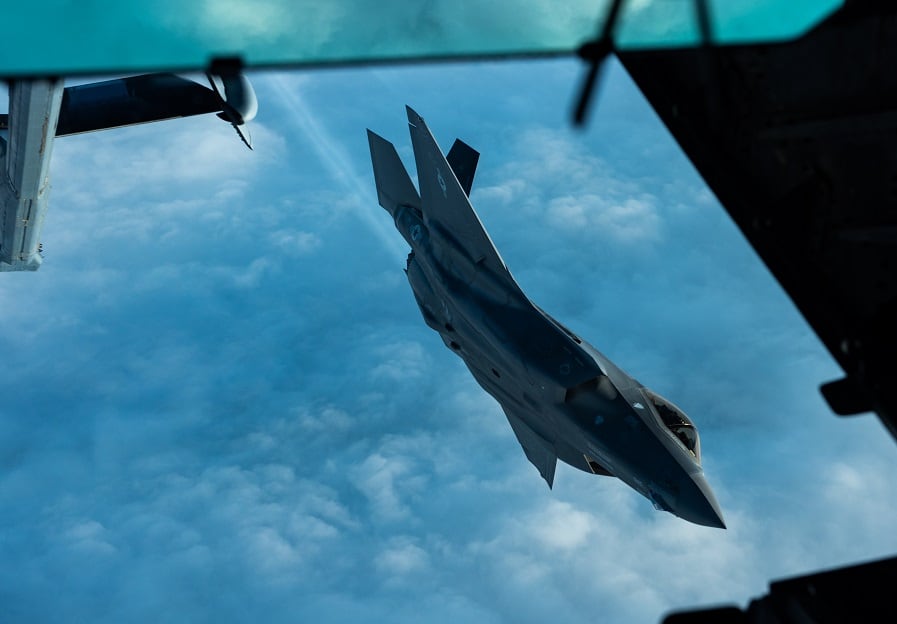Six B-52 Stratofortresses and more than 450 personnel returned from a short-term deployment to RAF Fairford in the United Kingdom on April 11 — one that allowed it to practice how Air Force units might deploy in the future.
The month-long deployment was in support of U.S. Strategic Command’s Bomber Task Force in Europe, and was the largest deployment of a single bomber platform since the beginning of the Iraq War in 2003. The airmen and bombers were from the 2nd Bomb Wing at Barksdale Air Force Base in Louisiana.
Maj. Gen. James Dawkins, commander of the Eighth Air Force and Joint-Global Strike Operations Center, said in a Monday release that the deployment of a modified wing structure — not just a squadron — will help “set the stage for future operations” by helping improve the wing’s agility and lethality.
“It’s different than what we’ve done at say, Al Udeid [Air Base in Qatar], where we just bring airplanes, aviators and maintainers on to a base that is fully built-out,” Dawkins said. “Yes, there is a good support network here [from Fairford’s 501st Combat Support Wing], but we are bringing that wing construct and bringing all the support organizations together and fighting as an entire unit at a much broader level.”
“To be lethal right now, we need to be agile," Dawkins continued. "That’s agile combat support, agile deployability, and that’s deploying in small units like a six-ship that we did here.”
Air Force Chief of Staff Gen. Dave Goldfein said last year the Air Force would need to practice deploying in different ways to prepare for the possibility of a fight against a peer or near-peer adversary. In recent years, the Air Force has become accustomed to deploying a handful of airmen to fill slots on well-established bases, Goldfein said in an interview at the Air Force Association’s conference last September.
RELATED

But in a fight against a peer adversary, Goldfein said, the Air Force will need to deploy whole squadrons or even wings — and they might not be able to count on finding support airmen in their war zone. If the enemy cuts off that deployed Air Force unit at their newly established base, they must be able to continue operating on their own and maintain momentum in the fight.
The Bomber Task Force rotation allowed the aircrew and support airmen to take part in joint training with NATO allies, joint partners and other Air Force units, which is different from the typical bomber rotation, U.S. Air Forces in Europe and Air Forces Africa said. The bombers flew more than 40 sorties across Europe, including over Norway, Iceland, Hungary, Latvia and the Baltic Sea.
“There’s a lot of stuff we don’t get to do at home that we learned over here,” Lt. Col. Mike Esposito, commander of the Bomber Task Force, said in the release.
Besides allowing the bomber crews to train, Dawkins said the deployment aimed to demonstrate — to both allies and potential adversaries such as Russia ― that the Air Force is capable and ready to quickly deploy if a conflict were to break out.
“Make no mistake, Russia is certainly watching what we’re doing, but more importantly our allies are watching,” Dawkins said. “We’re showing commitment to them across the board.”
Stephen Losey is the air warfare reporter for Defense News. He previously covered leadership and personnel issues at Air Force Times, and the Pentagon, special operations and air warfare at Military.com. He has traveled to the Middle East to cover U.S. Air Force operations.




